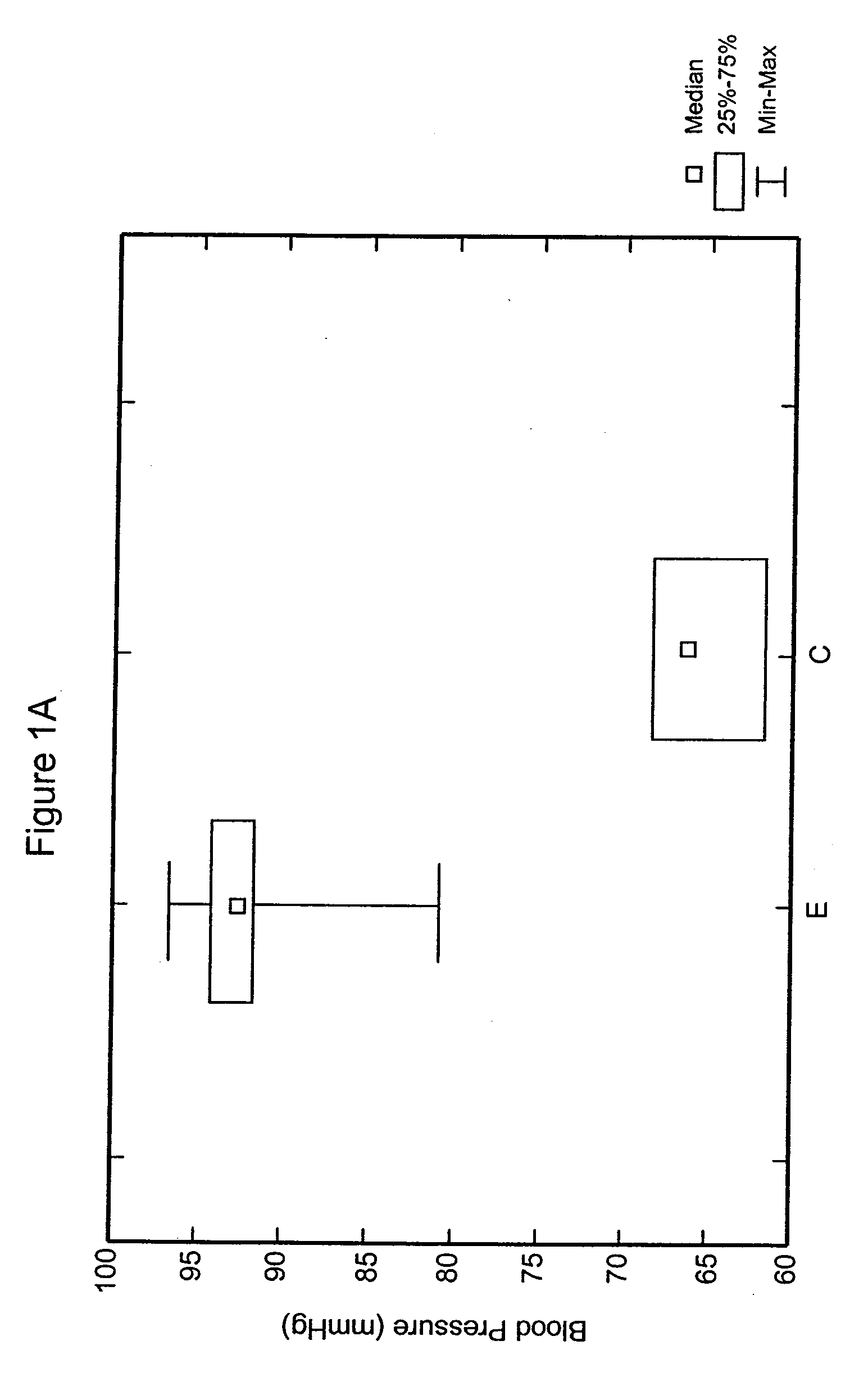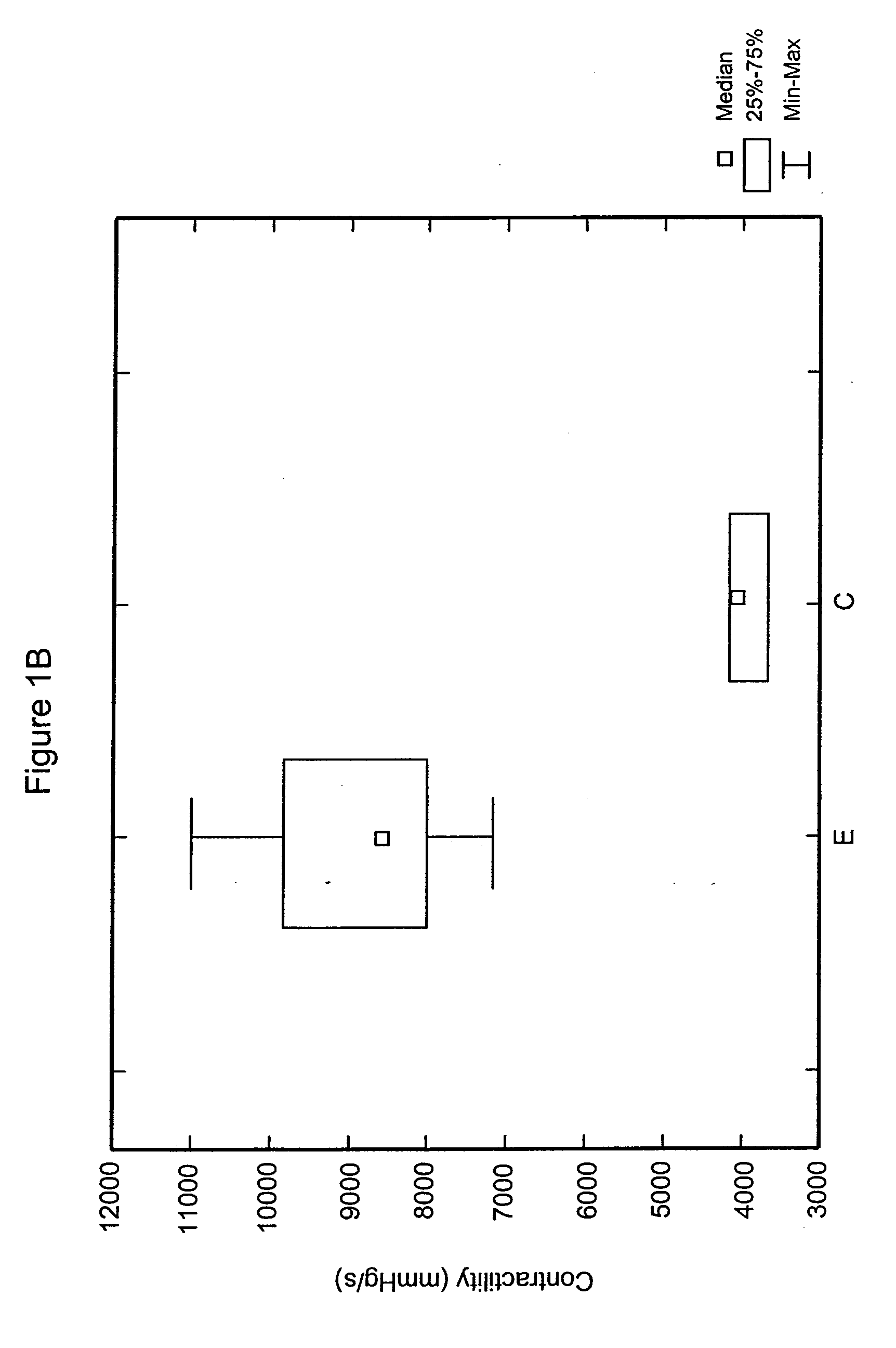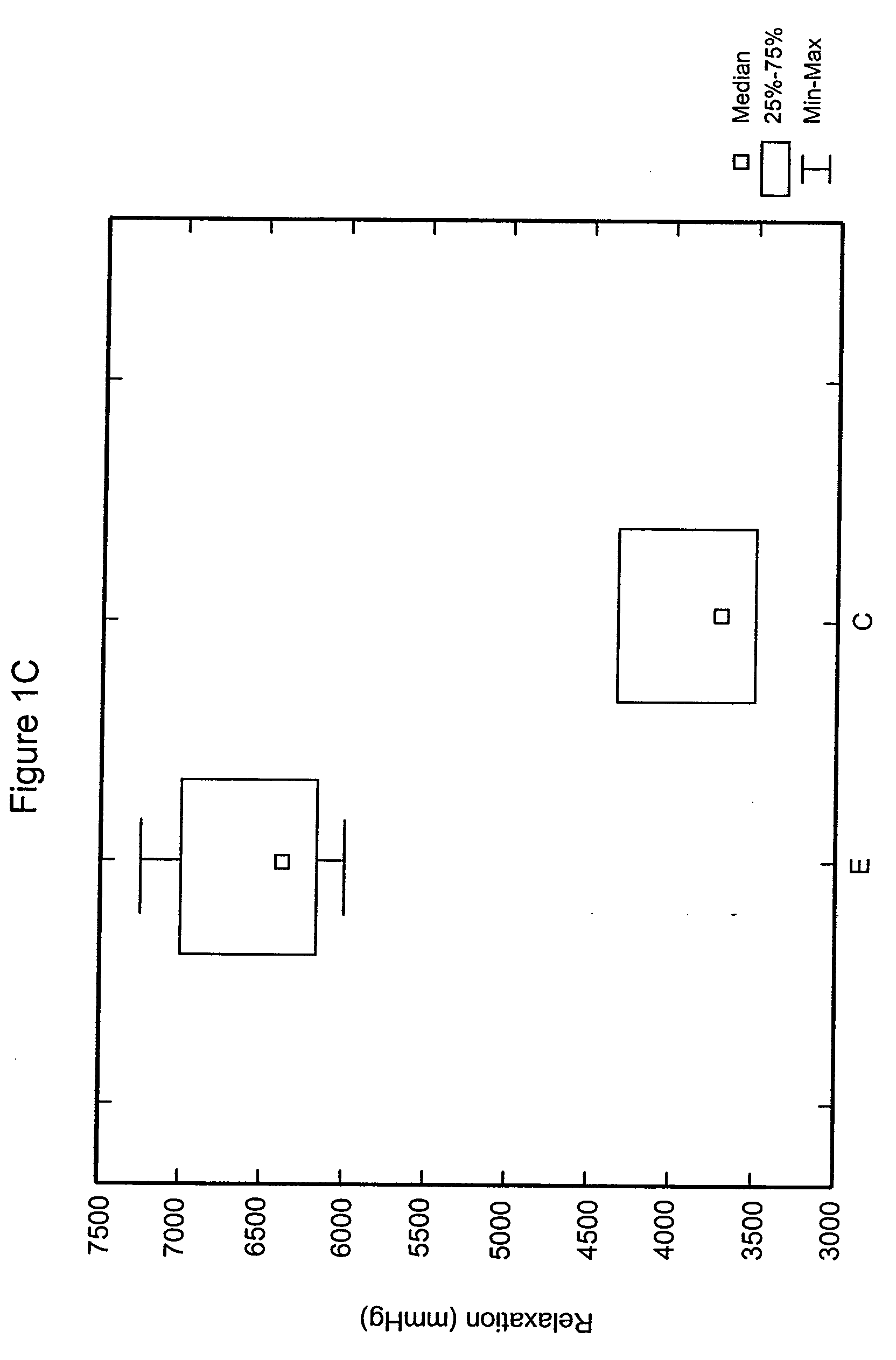Method Of Using Mitotically Inactivated Stem Cells For Damaged Tissue Repair
a technology of mitotically inactivated stem cells and damaged tissue, which is applied in the direction of skeletal/connective tissue cells, embryonic cells, biocide, etc., can solve the problems of reducing the clinical effect of esc technology, reducing the clinical effect of esc, and reducing the number of patients with es
- Summary
- Abstract
- Description
- Claims
- Application Information
AI Technical Summary
Benefits of technology
Problems solved by technology
Method used
Image
Examples
example 1
[0047]Mouse irradiated (20 Gy to 50 Gy) ESC were injected into ischemic murine myocardium using coronary artery clamping as an ischemic / reperfusion model. Mice receiving irradiated ESC were compared to mice receiving non-irradiated ESC and mice receiving no ESC.
[0048]Mice with infarct receiving non-irradiated ESC and mitotically inactivated ESC showed a marked improvement in terms of cardiac relaxation and contractility in comparison to mice receiving no ESC.
[0049]Untreated ESC gave rise to malignant rapidly growing teratomas in several of the subject heart while no residual ESC could be found in the hearts or any other organ of animals receiving mitotically inactivated ESC.
[0050]The materials, methods, and results follow herein below:
Mice
[0051]Female 129X1 / SvJ mice were purchased from the Jackson Laboratories (Jackson Lab, Bar Harbor, Main) and housed in filtered-top cages under barrier conditions with easy access to water and food. All animal experiments were appro...
example 2
Diabetes
[0061]Both type I and Type II diabetes are due to insufficient insulin for body requirements. In type I diabetes, beta islet cell loss is relatively rapid and profound with loss of insulin production. Non-obese diabetic mice develop clinical diabetes about 90 to 100 days of age. This process is due to immune-mediated destruction of insulin producing islet cells. We had previously demonstrated that mitotically inactivated ESC could repair ischemic injury induced dysfunction of myocardium. We next determined whether mitotically inactivated ESC could repair or prevent diabetes in NOD mice. The materials methods and results follow herein below
Mice
[0062]Six week old NOD / Ltj mice were obtained from Jackson laboratory.
Embryonic Stem Cells
[0063]Various animal blastocyst-derived embryonic stem cell lines may be utilized to maintain mouse embryonic stem cells in an undifferentiated state, cells were cultured on gelatinized tissue culture dishes in high-glucose Dulbecco's modified Eagl...
example 3
Lethal Radiation Injury
[0069]Lethal dose of total body irradiation-SJL / J mice survival was determined following different doses of total body irradiation (TBI) as shown in FIG. 3.
[0070]At 8 grays single dose TBI all mice died with 12 days. Next we irradiated mice with 8 gray TBI and while control mice received no further therapy, treated mice either received one injection one day after TBI or 3 injections on days 0, 2, and 4 after TBI. Irradiated washed ESC were injected either intravenous (tail vein or retro-orbital) at 5 million ESC per injection. Results are shown in FIG. 4.
[0071]All mice receiving 8 gray TBI alone died, only mice receiving mitotically inactivated ESC (treated with 30 Gy irradiation prior to injection) survived. Irradiated mice were female and injected mitotically inactivated ESC were male. There was no documentation of circulating y-chromosomes. The mitotically inactivated ESC provided a chaperone effect to endogenous hematopoiesis and there appeared to be a dos...
PUM
 Login to View More
Login to View More Abstract
Description
Claims
Application Information
 Login to View More
Login to View More - R&D
- Intellectual Property
- Life Sciences
- Materials
- Tech Scout
- Unparalleled Data Quality
- Higher Quality Content
- 60% Fewer Hallucinations
Browse by: Latest US Patents, China's latest patents, Technical Efficacy Thesaurus, Application Domain, Technology Topic, Popular Technical Reports.
© 2025 PatSnap. All rights reserved.Legal|Privacy policy|Modern Slavery Act Transparency Statement|Sitemap|About US| Contact US: help@patsnap.com



